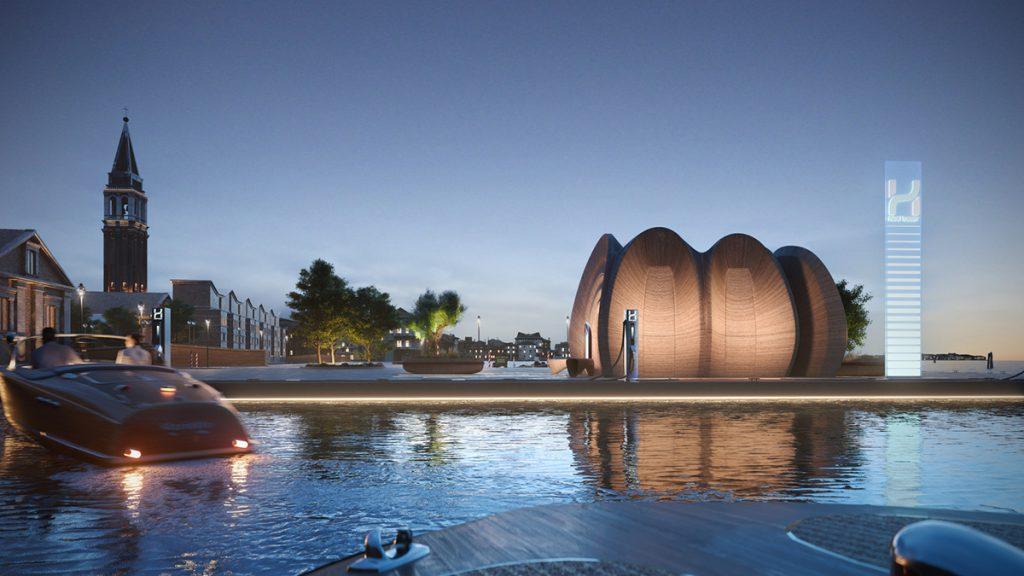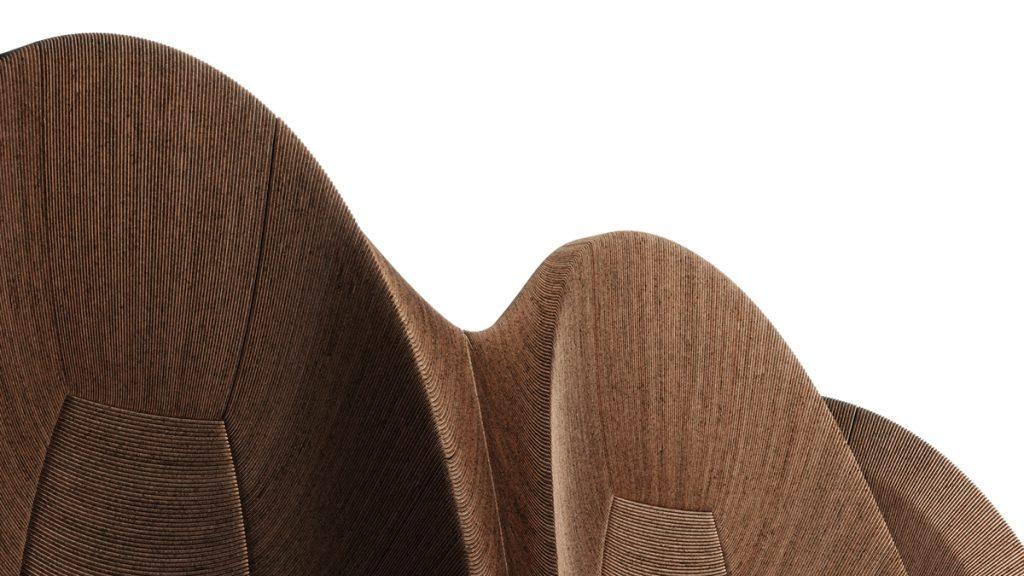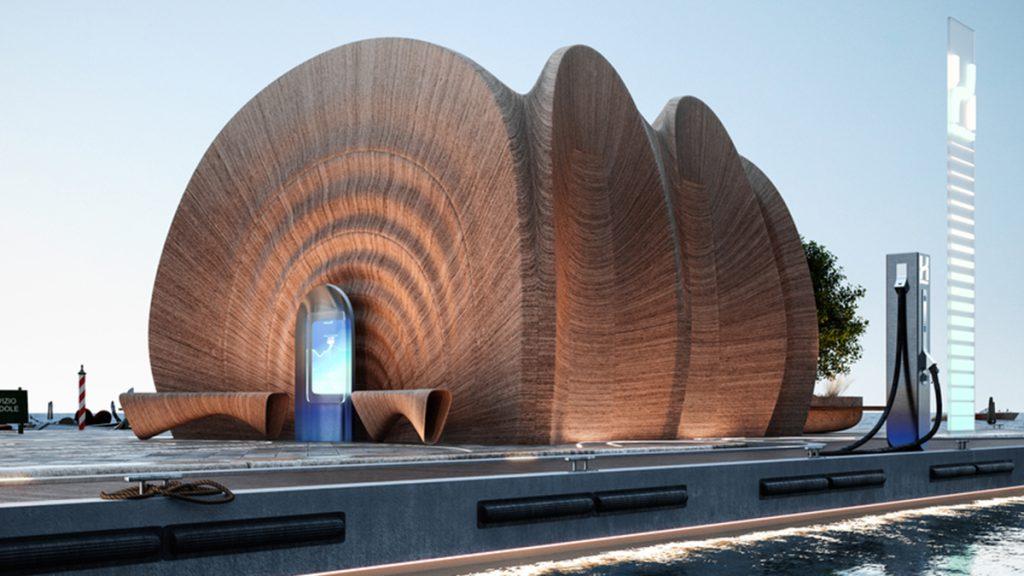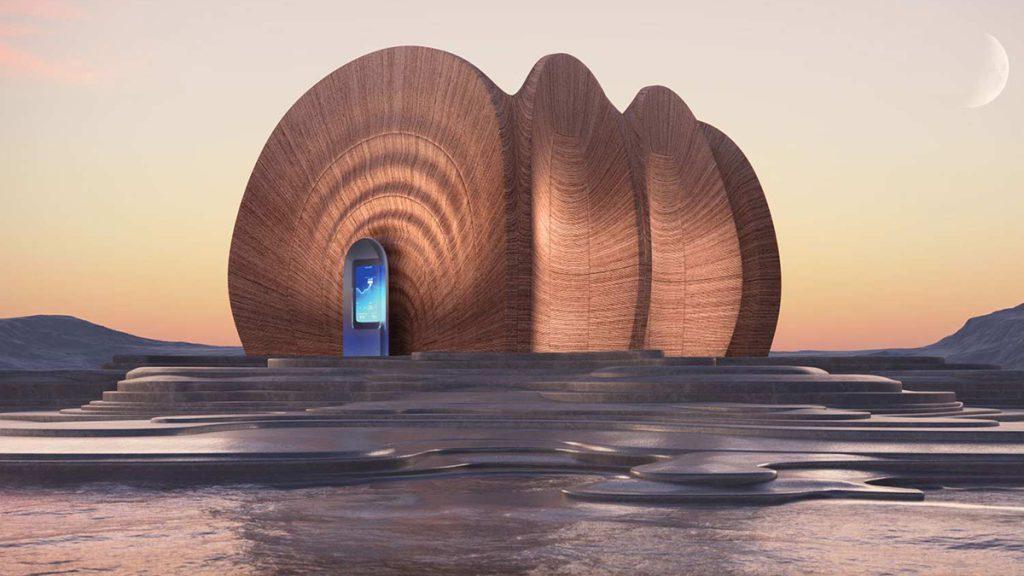Sport boats, yachts, Italian marinas. Terms that stand for lifestyle and luxury – and not necessarily for sustainability. Green hydrogen refuelling stations, designed by Zaha Hadid Architects, are now set to change that.
No, what is soon to rise up on the jetties of Italy`s marinas are not new giant shells that are conquering the country. Rather, they are the world’s first hydrogen refuelling stations for pleasure craft. Fuelling stations for times of climate crisis, because according to the project developers, it will be possible to fill up with so-called green hydrogen here in the future. In other words, hydrogen that is produced using renewable energies.
Such refuelling stations are planned for 25 marinas on the Italian coast. Planned commissioning: as early as summer 2024. 100 such stations are to be built throughout the Mediterranean region by 2030. The technology behind the green hydrogen for pleasure craft was developed by the company NatPower H based in Milan. Zaha Hadid Architects (ZHA) was responsible for the architectural design of the spectacular buildings. Total investment in the project: 100 million euros.

Energy network
‘With renewable energy projects in the pipeline totalling more than 23 gigawatts, we decided to create NatPower H – the first global operator for the production, storage and distribution of green hydrogen –, to build the world’s first hydrogen refuelling stations for recreational craft,’ explains Fabrizio Zago, CEO of the NatPower Group.
In addition, more and more marinas are now banning the use of diesel engines. A decision that is driving the rapid turnaround in energy use in the shipping industry. And a development that also supports the infrastructure proposed by NatPower H and ZHA. The joint plan is therefore to create a network of energy centres that will promote the further development of hydrogen-powered ships.
By installing the infrastructure for the supply of green hydrogen, NatPower H aims to create a network of sustainable energy centres in all major Italian marinas and ideal conditions for the further development and use of hydrogen-powered vessels.
Technologies of the future in the now
According to Architekten Studios, the planned 100 stations for hydrogen refuelling stations will save up to 45,000 tonnes of greenhouse gas emissions in the leisure boat segment every year. An investment in the climate and the environment.
And because this project is all about sustainability, the petrol stations themselves are also built exclusively from sustainable materials. Based on a kind of modular principle, ZHA has designed a modular system with which the various locations in the Mediterranean region can be customised and flexibly designed. The segments of the individual modules are created using 3D-printing technology so that the complete petrol station can be perfectly adapted to the local conditions. After all, the specific local conditions such as overall size, seating, pedestrian traffic and bicycle charging facilities are different in every marina.s.

Ancient Roman technology
But 3D printing technology has another advantage. The modules are fully recyclable and are assembled (dry) on site – reducing construction waste. It also creates flowing shapes and geometry inspired by the Mediterranean landscape and its marine ecosystem. Low-carbon concrete gives the petrol station building its structure and strength.
Once again, it is the combination of ancient knowledge and contemporary innovation that makes this design so special. Because: ‘The hydrogen refuelling stations combine the latest innovations in construction technology with the historical technology developed by the Romans more than 2,000 years ago. They utilise advanced circular construction technologies that reflect NatPower H’s commitment to an environmentally responsible future,’ says Filippo Innocenti, Director of Zaha Hadid Architects.

All for one, one for all
The office uses locally sourced materials in this project. Sand, earth and sustainable cement form the basic building blocks of each station, which is ultimately erected on just 50 square metres. This innovation was made possible by creativity and remarkable collaboration between a wide range of experts from various sources.
It was not only NatPower H that worked on this project for a sustainable future, but also companies such as Baglietto, BluEnergy Revolution and Tecma Solutions.But this structural innovation can also compete with green hydrogen in terms of design. ZHA’s Computation and Design Research Group (ZHA CODE) developed the modular construction system for the stations in collaboration with the Block Research Group and Incremental3D. Multiple award-winning design units.
What almost reads like the end credits of a feature film is a beautiful sign of global cooperation. Initially for local sustainability, which in the overall picture stands for a climate-neutral future for all.
Text: Eva Schroeder
Bilder: Zaha Hadid Architects



iThere are no comments
Add yours